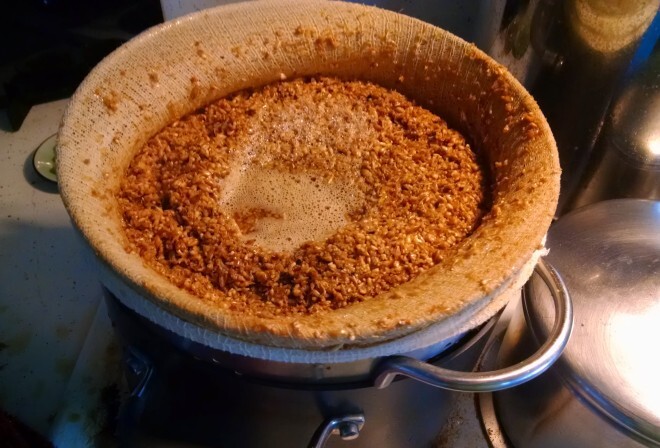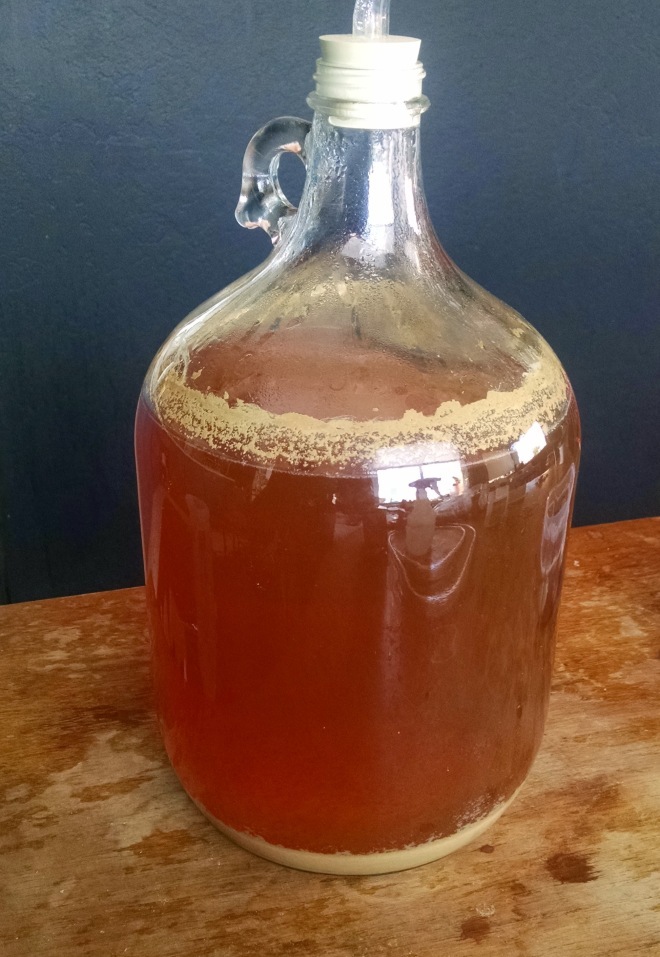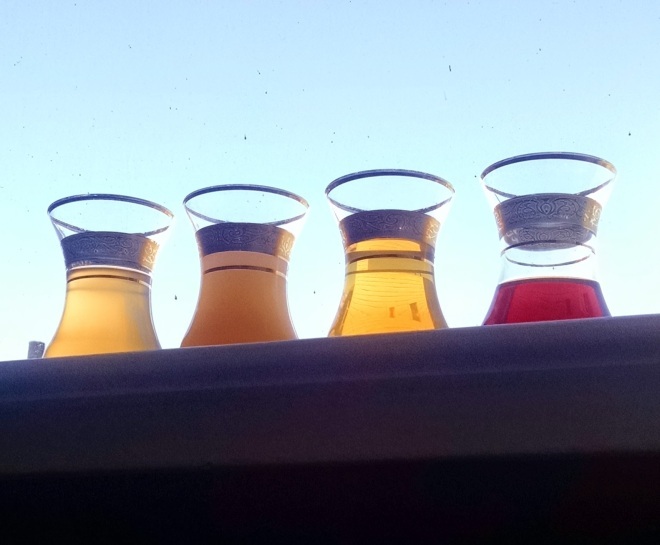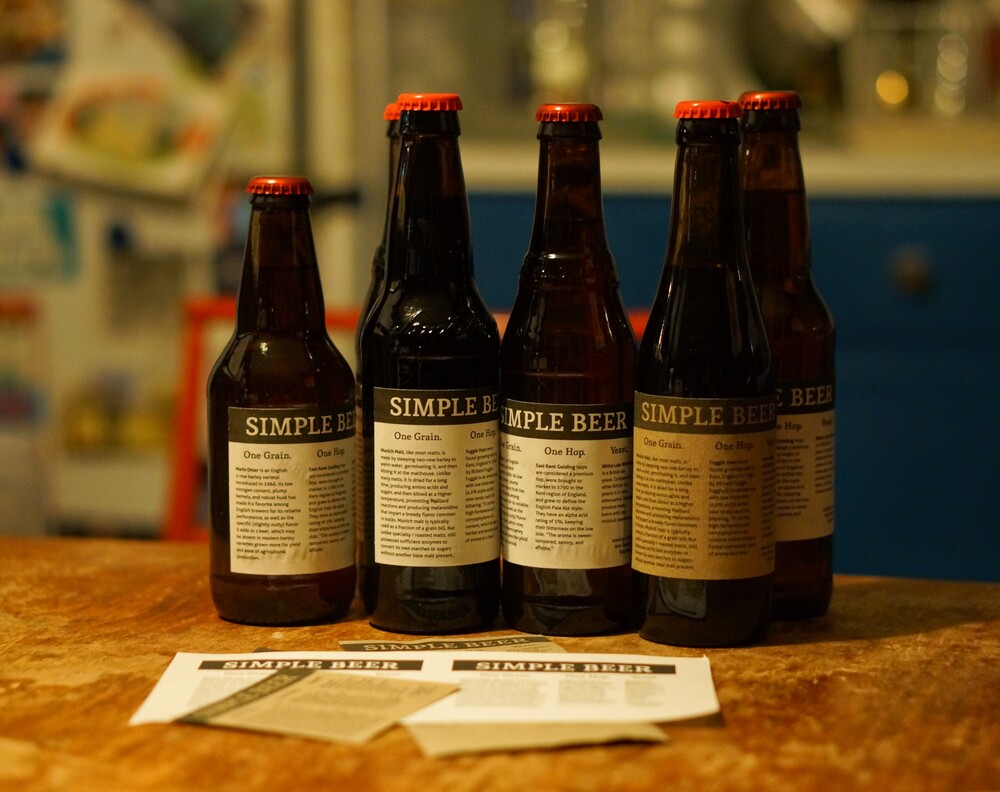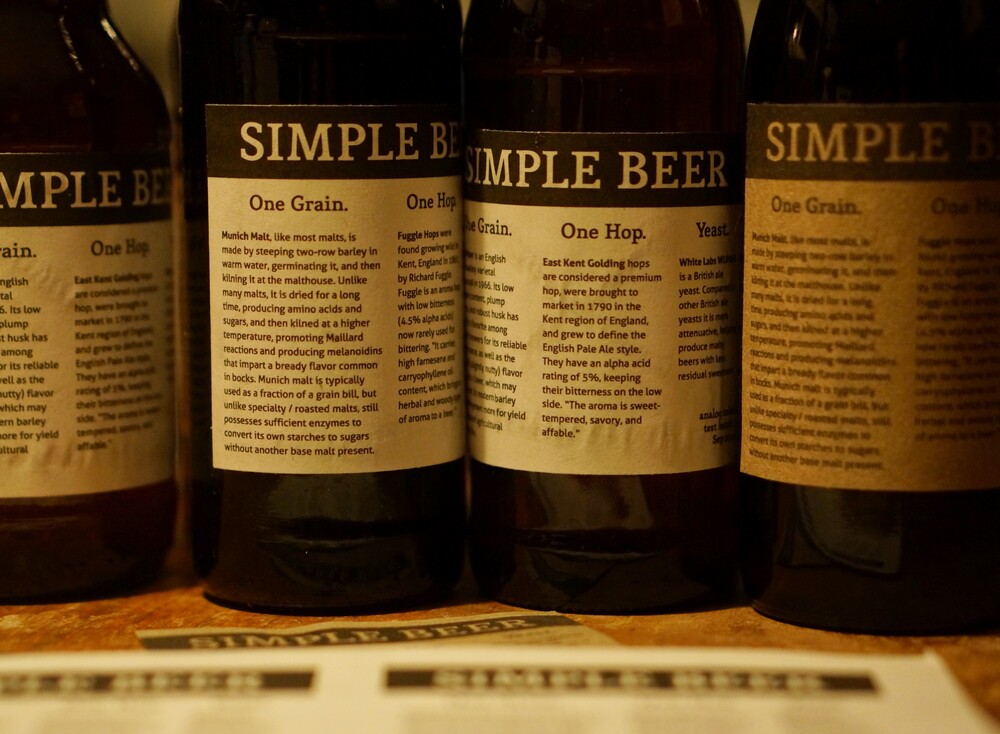I’ve kept homebrewing a low-tech, visceral, hands-on hobby as a contrast to large engineering systems that occupy another part of my life. Part of this has been focusing on the process, ingredients, and history more than the equipment.
Partial-mash brewing (mashing modest quantities of grain but depending on liquid barley malt extract for more of the sugars) is one way to more easily brew indoors on a small electric stovetop rather than having to manhandle 15lbs of grain through multiple kettles, and I’ve been happy with several of the beers I’ve made using this method.
But I’ve wanted to get down to the simplest kernel of brewing– whole grain, water, hops, and yeast, and try more experiments especially on the grain variety and the mashing process. And 5 gallons of beer goes a long way. So I tried scaling down to single-gallon batches, and it’s been invigorating– it’s unlocked casual weeknight after-work brewing as a possibility (even after-dinner before-bed brewing depending on timing– it’s about three and a half hours from beginning to end including prep and clean-up) and made stovetop all-grain brewing much more practical. Yes, it’s much more work per beer. But it’s still less work per batch, and only getting 8 or 9 beers out is still enough to sip over the following month / share with a few friends.
One week in August, I even brewed two batches in one week (with bottling/cleanup on the same day about a month later to save some time), both very simple / elemental beers to get to know some ingredient and part of the process.
Batch #10 involved only a single grain (Maris Otter, a particular English variety of 2-row barley) and a single hop (East Kent Goldings).
Here’s the “Brew In A Bag” setup: whole grains in cheesecloth soaked in very specific-temperature water (148F-155F depending what you’re trying to get out of the grain), easy to remove and drain after mashing (not shown: the lid and blanket used to insulate and maintain temperature, and the second pot of higher-temperature “sparge water” used to rinse wort off the grains afterwards to increase yield):
For this beer, I mashed at the low end of the temperature range to try to get a drier, less sweet, less complex beer, hitting a post-boil specific gravity of 1.044 (on the low side, meaning I should expect a roughly 4% ABV session ale out of this, though I ended up around 5% ABV because it fermented all the way down to 1.006 – mashing at low temperature means very few of the less fermentable long-chain complex sugars are produced, so the yeast can ferment almost everything present). In this carboy it looks darker in color because of the thickness, but it’s the yellow second beer from the right in the line of glasses another photo down.
Above, from left to right: two hard ciders I was fermenting at the same time, this all-Maris-Otter batch, and on the right, Batch #11: a reddish Munich-Malt-and-Fuggles (also a one-gallon, single-grain, single-hop) beer.
After bottling both batches a month later (Simple Beer experiments deserve a simple label):
Another few weeks later I tried them. While they weren’t fully carbonated so should condition a few more weeks, they were both already interesting enough to declare this a success:
The Maris Otter ale was a pleasant, very mild beer, with a slight smell of straw, and a light barley/hay/nutty taste. It had almost no bitterness (just enough to give a hint) and no sweetness.
The 100% Munich Malt ale on the other hand had a caramelized malt nose almost reminiscent of a lighter doppelbock (one of my favorite styles), and a robust flavor of caramelized grain– not sweet in a sugary sort of way, but with the mix of flavors you get from Maillard reactions or a brown shiny crust on a nice loaf of bread. Again, it had almost no bitterness or hop flavor (by design), and wasn’t especially complex, but I would happily drink this any day. I’d mashed the malt for this beer at the high end of the typical temperature range (155F), which was supposed to result in “more complex sugars / resulting in lower alcohol content and a full bodied beer with a lot of mouth-feel”. What do you know, chemistry works…
